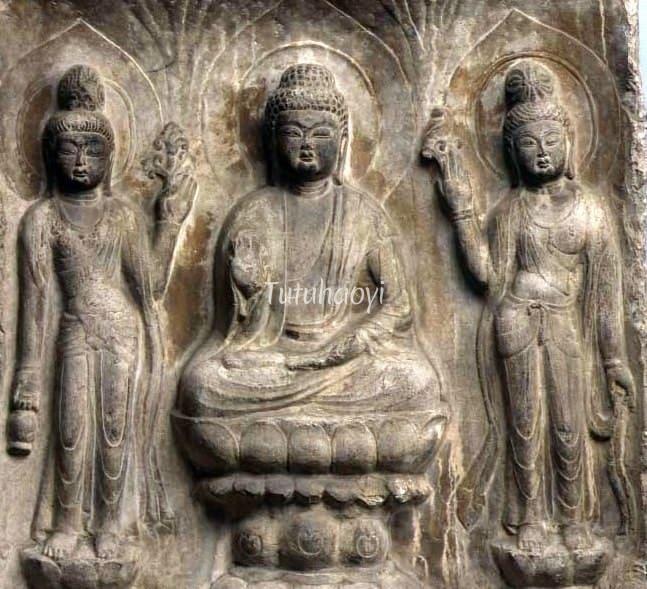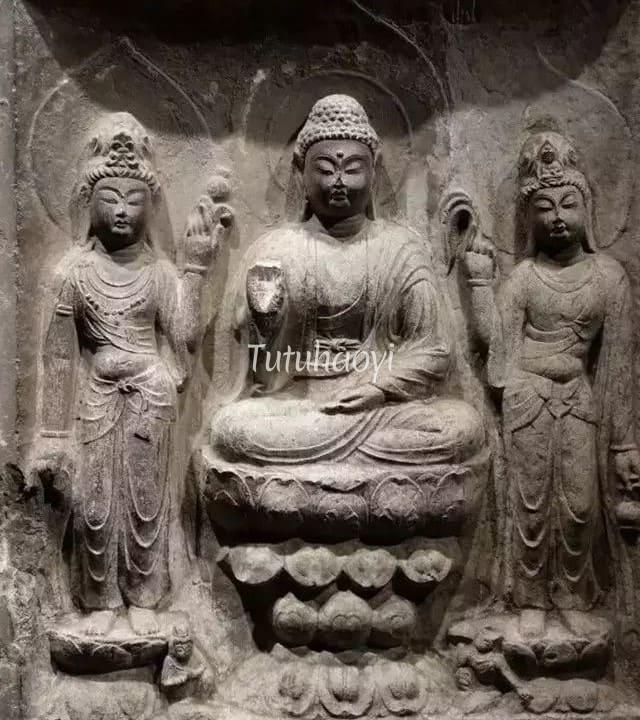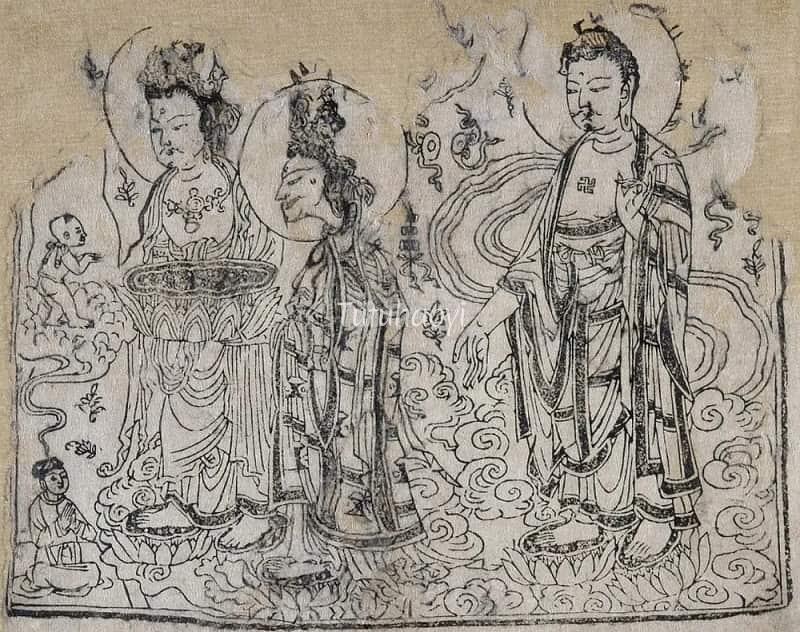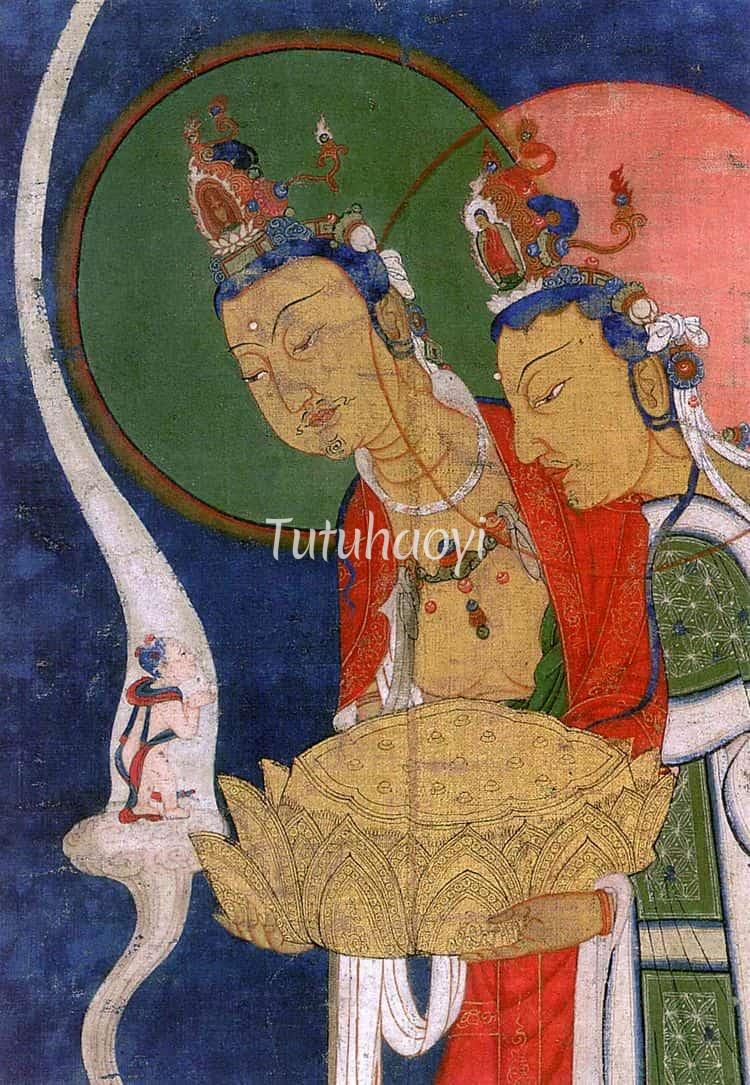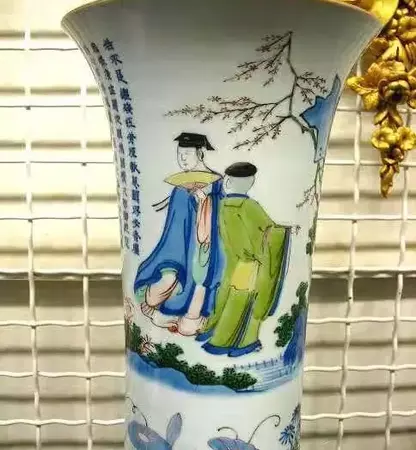Editor: This blog article is written by Dr Yibin Ni for buddha admirers, sculpture collectors and museum curators with a view of antique appreciation.
image above: relief carvings of the ‘Three Saints of the West’, 8th century, courtesy of Baoqing Temple, Xi’an, Shaanxi Province
In the Wikipedia entries ‘Amitabha (阿弥陀佛)’ and ‘Pure Land Buddhism (净土宗)’, Avalokiteśvara (观音菩萨) is said to be ‘on the right’ and Mahāsthāmaprāpta (大势至菩萨) ‘on the left’ in the ‘Three Saints of the West (西方三圣)’, while in the Chinese texts the reverse terminology is used: the former is called ‘the left assistant Bodhisattva of Amitabha (左胁侍)’ and the latter, ‘the right assistant Bodhisattva of Amitabha (右胁侍)’.

Typically, the attributes of Avalokiteśvara include a miniature Amitabha (化佛) set in the crown and a bottle for auspicious water and a sprig in the hands (甘露瓶和杨枝), while Mahāsthāmaprāpta’s crown bears a vessel filled with great wisdom.
However, in reality the positions of Avalokiteśvara and Mahāsthāmaprāpta are found to be interchangeable and their attributes are sometimes prominent and sometimes obscure, as are shown in examples presented here, such as the relief carvings of the ‘Three Saints of the West’ in Baoqing Temple, Xi’an, Shaanxi Province, constructed in the 8th century and images found in the Black Water City Ruins in Central Asia made in the 12-13 centuries.
